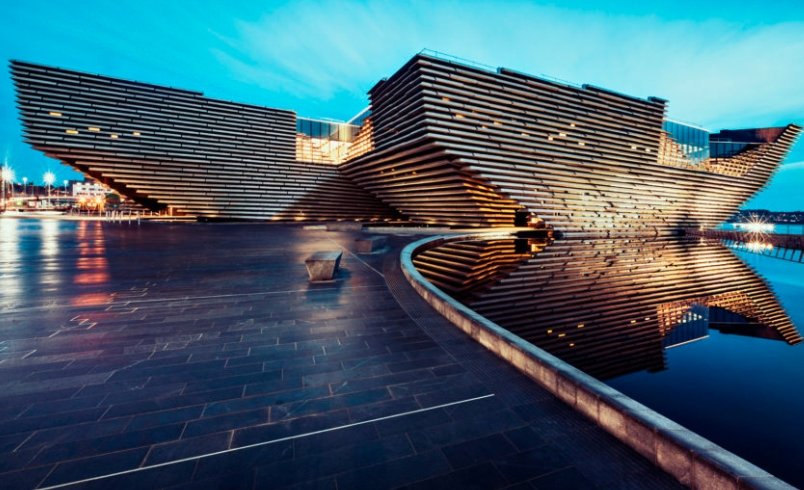Scotland’s bold post war buildings face threats but see fresh hope through saves and a new guide. In 2025, key sites like the Bernat Klein Studio found new life, while experts push to protect more from loss.
Roots of Scotland’s Modernist Boom
Scotland entered a time of big change after World War Two. Architects drew from European ideas to build better lives for everyday people. They created schools, homes, and public spots that aimed for a fresh start. This movement turned old ideas upside down and shaped towns across the nation.
The style mixed clean lines with local touches. Think flat roofs on homes in posh areas and full new towns like Cumbernauld. It promised a brighter future with better housing and community spaces. By the 1960s, bolder forms took over, like the heavy concrete of brutalism from leaders such as Le Corbusier.
Experts note how this era fit Scotland’s needs. Post war shortages called for smart designs that used less but did more. Architects like Basil Spence and Robert Matthew led the way. They built everything from cozy villas to large projects that served thousands.

Iconic Sites Fighting for Survival
Many of these structures now stand at risk from time and tough times. Yet 2025 brought wins that show growing care. The Bernat Klein Studio near Selkirk sold at auction in July for 279,000 pounds, far above its starting price. A group of heritage groups, led by the National Trust for Scotland, stepped in to buy it. They aim to fix it up as a design hub, with costs set to top 2.5 million pounds.
Another win came for the Cables Wynd House in Edinburgh, known as the Banana Flats. This brutalist gem got top protection status back in 2017. Now, teams work on updates to keep it strong for years ahead. These efforts highlight how public push can turn neglect into pride.
Cumbernauld Town Centre remains a big worry. Plans call for tearing down parts in 2025 and 2026 to make room for new shops and services. But voices call to save the heart of this 1960s megastructure. It once drew praise for its fresh Nordic style, much like spots in London that got a second chance.
Here are key preservation steps taken this year:
- Coalition buys Bernat Klein Studio to stop decay and plan full restore.
- Fleming House in Cumbernauld comes down as first move in town refresh.
- Calls grow to keep Cumbernauld’s core intact for future use.
- Heritage funds boost work on at risk modernist spots nationwide.
Spotlight on a Groundbreaking New Book
A fresh look at this legacy hit shelves in October 2025. Modernist Scotland by Bruce Peter covers 150 buildings from 1950 to 1980. It mixes history with photos to show how these designs changed the land. Peter, a design history professor, spent years on this work to spark more love for the style.
The book points out lost chances too. Many sites fell to the wrecking ball in the 1970s recession. Unlike England, where brutalist works often got saved, Scotland lagged due to less awareness. Peter hopes his pages will teach folks to see value in these post war gems.
Readers praise it for deep dives into places like Queen’s College in Dundee and the Cairngorm ski spot. It ties the builds to social shifts, like better worker homes. Crowdfunding helped make it real, pulling in fans who want to guard this past.
Why Modernism Matters Today
These buildings tell Scotland’s story of hope after hard times. They improved daily life with smart spaces for all. Now, as cities grow, saving them aids tourism and culture. Think of how fixed sites draw visitors and boost local pride.
Challenges linger, though. Money shortages and old views see many as eyesores. But shifts show change. Sales of spots like the old Glasgow College of Building prove interest rises. Experts link this to wider trends in green fixes that reuse strong frames.
A table of notable Scottish modernist buildings shows the range:
| Building Name | Location | Year Built | Status in 2025 |
|---|---|---|---|
| Bernat Klein Studio | Selkirk | 1972 | Bought by coalition; restoration planned |
| Cumbernauld Town Centre | Cumbernauld | 1960s | Partial demolition underway; core at risk |
| Cables Wynd House | Edinburgh | 1965 | A-listed; under renovation |
| Queen’s College | Dundee | 1960s | Preserved; in use |
| St Peter’s Seminary | Cardross | 1966 | On watch list; past save efforts failed |
This mix of old and new keeps the drive alive.
Path Forward for Preservation
Leaders now eye more action to match England’s saves. Groups push for better education on built history. Peter’s book joins calls to list more sites before it’s too late. Recent shortlists for top building awards include restored old towers, blending past with now.
Ties to today’s world add pull. Modernist designs fit green goals with their simple forms. As Scotland plans for growth, these lessons guide smart builds. Fans see them as links to a bold era that still inspires.
What can readers do? Share your thoughts on local modernist spots in comments below. Like and share this piece to spread the word on saving Scotland’s treasures.
















